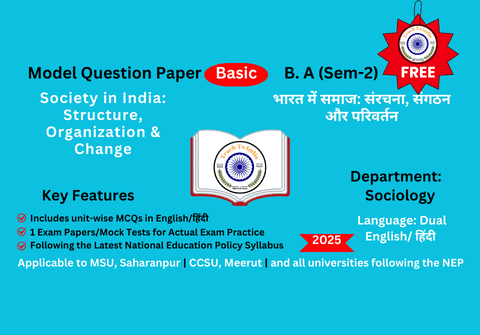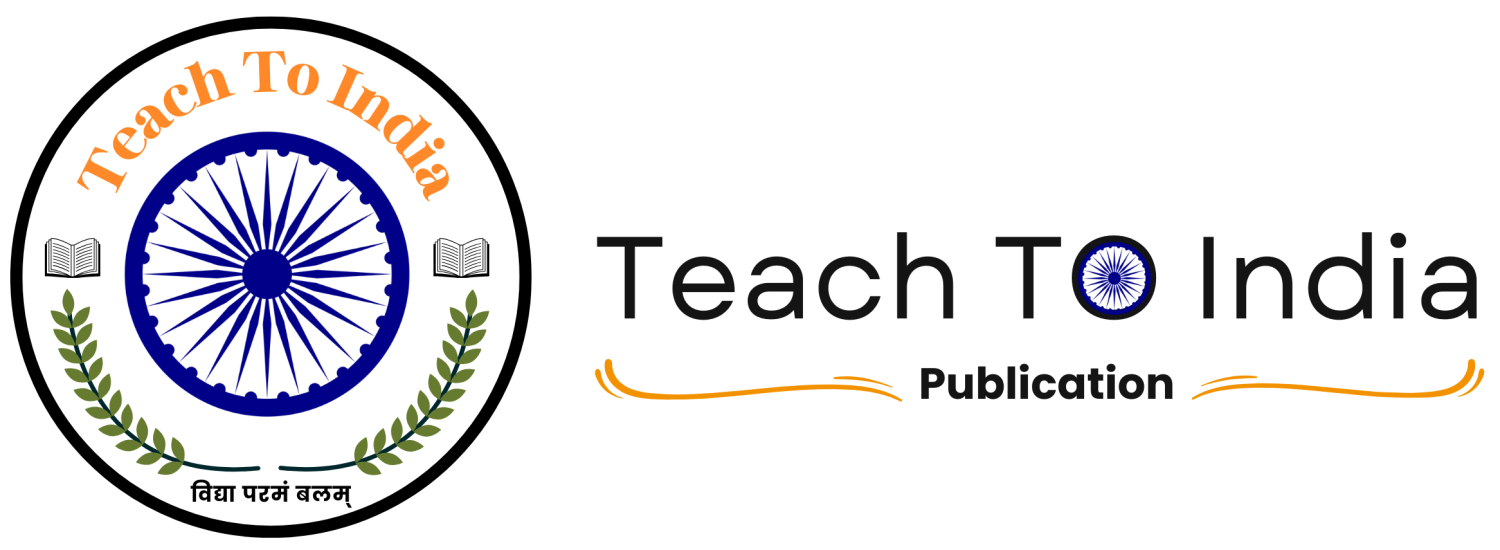Society in India: Structure, Organization and Change - भारत में समाज: संरचना, संगठन और परिवर्तन
- Description
- Curriculum
- Reviews

Model Question Paper
Society in India: Structure, Organization and Change – भारत में समाज: संरचना, संगठन और परिवर्तन
Key Features | मुख्य विशेषताएँ
- Bilingual Model Paper | द्विभाषी मॉडल पेपर
- Enough MCQ for Practice | अभ्यास के लिए पर्याप्त MCQ
- Exam Practice Paper with Mock Tests | मॉक टेस्ट के साथ परीक्षा अभ्यास पत्र
- Latest Syllabus as per NEP | NEP के अनुसार नवीनतम पाठ्यक्रम
- Designed by Experts | विशेषज्ञों द्वारा तैयार किया गया
The given MCQs cover only 10% of the syllabus | दिए गए बहुविकल्पीय प्रश्न केवल 10% पाठ्यक्रम को कवर करते हैं।
To cover 100% of the syllabus with summaries, upgrade to our Advanced Model Paper.| पूरा सिलेबस और सारांश कवर करने के लिए हमारा एडवांस मॉडल पेपर जॉइन करें। Join Advanced Model Paper
|
Program Class: Certificate/ BA |
Year: First |
Semester: Second |
||
|
Subject: Sociology |
||||
|
Course Title: Society in India: Structure, Organization & Change |
||||
|
Course Learning Outcomes: On completion of this course, learners will be able to: This paper is designed in this manner, so that students are introduced to the concepts related to Indian Society. They are made familiar with the structure and organization of Indian Society, its linkages and continuity with past and present. It also gives insights to analyze contemporary changes in Indian society and provides comprehensive understanding of various aspects of Indian social system. |
||||
|
Credits: 4 |
Core Compulsory |
|||
|
Max. Marks: –25+75 |
Min. Passing Marks: 33 |
|||
|
Unit |
Topics |
|||
|
I |
The structure and composition of Indian society: Village, Town, City, Rural-Urban linkages. Unity and diversity in Indian society. |
|||
|
II |
Indological, Historical, Structural and Functional Perspective to study Indian Society. |
|||
|
III |
Cultural and Ethnic diversity: Diversities in respect of language, caste, region, and religious beliefs and practices.
|
|||
|
IV |
Tribal Communities in India: Geographical distribution, Problem of Assimilation, Integration and Assertion, Backwardness and Underdevelopment in Tribes. |
|||
|
V |
Basic Institutions of Indian society: Caste, Marriage, Religion, Class, and Joint Family. |
|||
|
VI |
Social Classes in India: Agrarian-Rural, Industrial-Urban; The Middle Class; Exclusion and Inclusion, Backward classes, Dalits, Women. |
|||
|
VII |
Population: Structure and dynamics, Demographic analysis, Population explosion, Demographic theories, Population growth, and control. |
|||
|
VIII |
Change and Transformation in Indian Society; Factors affecting National Integration: Casteism and Politics of caste in India, Communalism and Politics of Communalism, Naxalism |
|||
-
1Unit 1: MCQs - Society in India: Structure, Organization and Change
-
2Unit 2: MCQs - Society in India: Structure, Organization and Change
-
3Unit 3: MCQs - Society in India: Structure, Organization and Change
-
4Unit 4: MCQs - Society in India: Structure, Organization and Change
-
5Unit 5: MCQs - Society in India: Structure, Organization and Change
-
6Unit 6: MCQs - Society in India: Structure, Organization and Change
-
7Unit 7: MCQs - Society in India: Structure, Organization and Change
-
8Unit 8: MCQs - Society in India: Structure, Organization and Change







